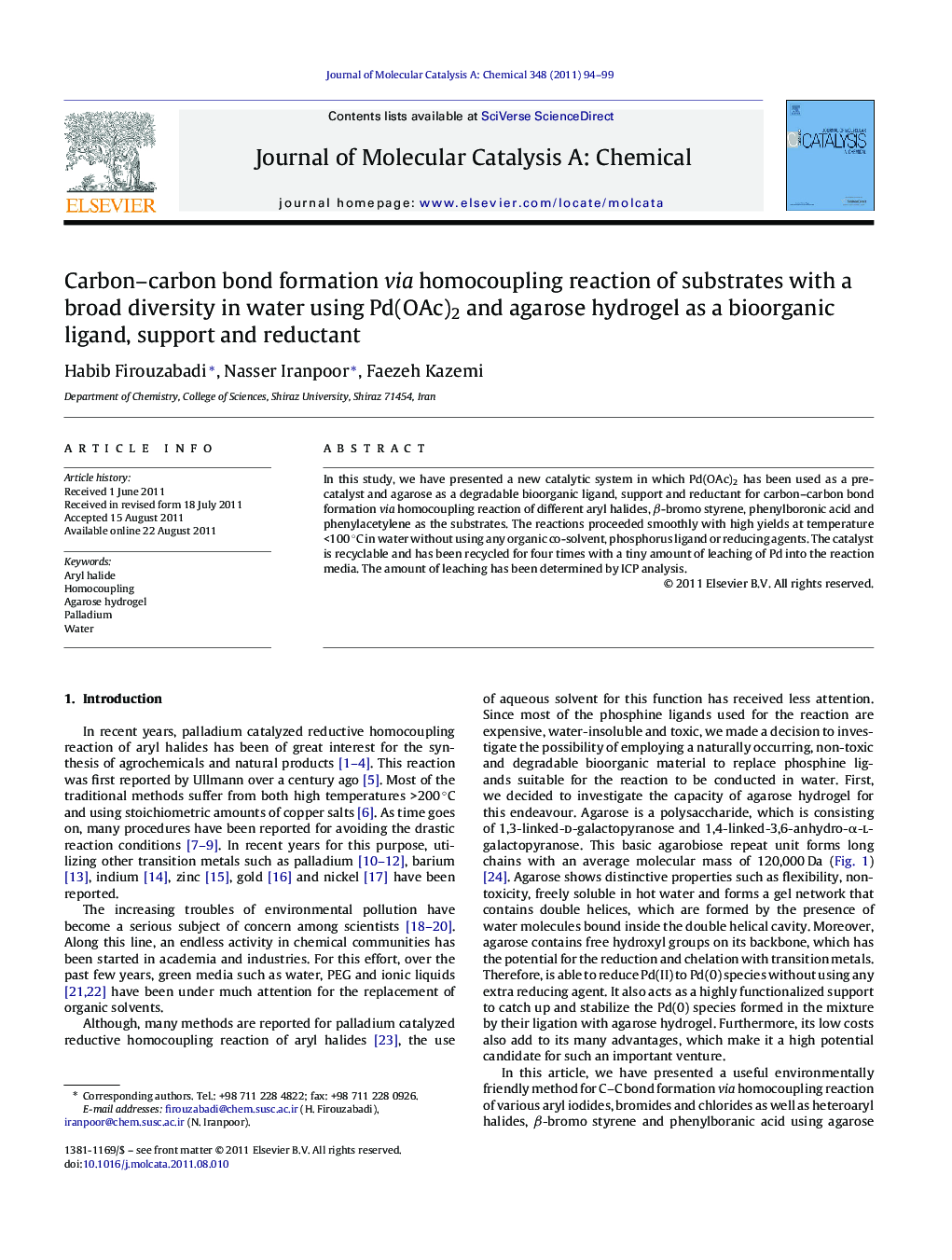| Article ID | Journal | Published Year | Pages | File Type |
|---|---|---|---|---|
| 66290 | Journal of Molecular Catalysis A: Chemical | 2011 | 6 Pages |
In this study, we have presented a new catalytic system in which Pd(OAc)2 has been used as a pre-catalyst and agarose as a degradable bioorganic ligand, support and reductant for carbon–carbon bond formation via homocoupling reaction of different aryl halides, β-bromo styrene, phenylboronic acid and phenylacetylene as the substrates. The reactions proceeded smoothly with high yields at temperature <100 °C in water without using any organic co-solvent, phosphorus ligand or reducing agents. The catalyst is recyclable and has been recycled for four times with a tiny amount of leaching of Pd into the reaction media. The amount of leaching has been determined by ICP analysis.
Graphical abstractIn this study we have presented an heterogeneous palladium catalyst supported on agarose hydrogel for homocoupling reaction of aryl halides in water.Figure optionsDownload full-size imageDownload high-quality image (97 K)Download as PowerPoint slideHighlights► Agarose was used as a reductant for Pd(II) salt. ► Agarose was used as a support for palladium particles. ► Homocoupling reaction of aryl halides was reported. ► The reaction was conducted in aqueous media. ► The reaction was conducted under ligand- and amine-free conditions.
